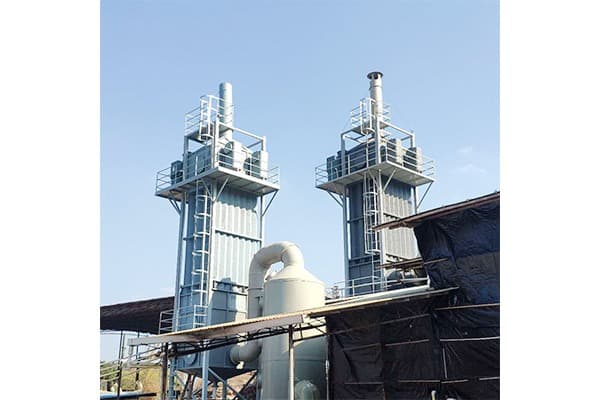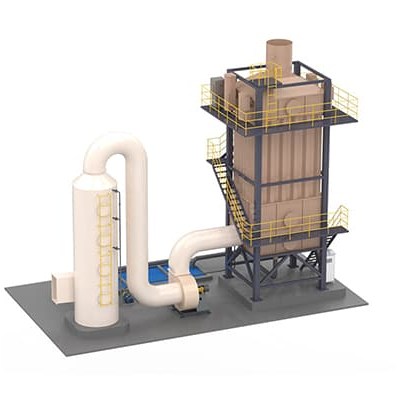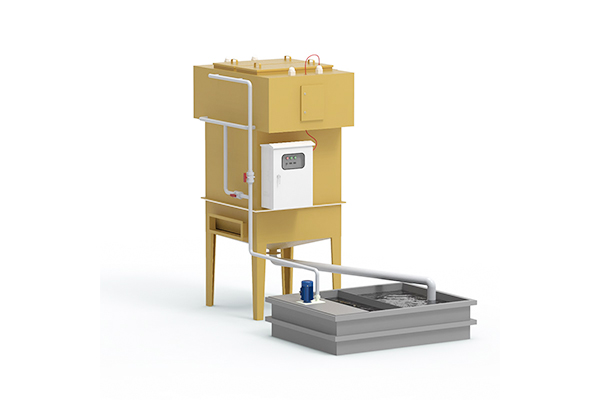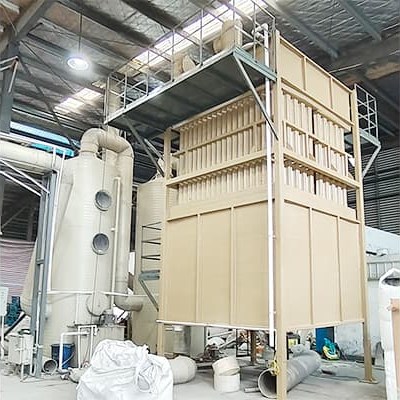Why is Flue Gas De-Whitening a beautiful transformation of industrial waste gas?
Flue Gas De-Whitening technology plays a key role in industrial waste gas treatment. It achieves a beautiful transformation of industrial waste gas by removing harmful substances such as sulfur oxides (such as SO2), nitrogen oxides (such as NOx), and particulate matter in flue gas.
1. Efficient removal of sulfur oxides (SO2)
Limestone-gypsum wet desulfurization: This is one of the most commonly used Flue Gas De-Whitening technologies. SO2 in flue gas reacts with limestone slurry to form calcium sulfite, which is then oxidized to calcium sulfate (gypsum), effectively removing sulfur oxides from flue gas.
Semi-dry and dry desulfurization: When wet desulfurization is not suitable, semi-dry and dry desulfurization technologies can also efficiently remove SO2 and meet strict emission standards.
2. Reduce nitrogen oxide (NOx) emissions
Selective catalytic reduction (SCR): Under the action of a catalyst, NOx is reduced to nitrogen and water by injecting ammonia or urea into the flue gas, significantly reducing nitrogen oxide emissions.
Selective non-catalytic reduction (SNCR): In the absence of a catalyst, NOx is reduced to nitrogen and water by injecting ammonia or urea. It is an economical and effective NOx emission reduction technology.
3. Removal of particulate matter
Electrostatic precipitator (ESP): Use electrostatic force to adsorb particulate matter in flue gas, effectively remove fly ash and dust, and reduce the content of particulate matter in flue gas.
Bag filter (FF): It captures particulate matter in flue gas through filter bags, has high dust removal performance, and is suitable for processing fine particulate matter.
4. Improve flue gas visibility
Post-treatment of wet flue gas desulfurization: The white smoke problem generated after wet flue gas desulfurization can be treated by flue gas reheating, condensation and other technical means to reduce the condensation of water in the flue gas, significantly improve the visibility of the flue gas, and achieve the "whitening" effect.
Flue gas recirculation (FGR): By recirculating part of the flue gas, the flue gas temperature is reduced, the generation of white smoke is reduced, and the combustion efficiency is improved and the pollutant emissions are reduced.
5. Reduce greenhouse gas emissions
CO2 capture and storage (CCS): In the de-whitening process, CO2 capture technology can be combined to capture and store CO2 in flue gas, reduce greenhouse gas emissions, and address climate change issues.
6. Improve energy efficiency
Waste heat recovery: In the Flue Gas De-Whitening process, waste heat in flue gas can be recovered to heat boiler feed water or other process flows to improve energy efficiency.
7. Environmental and social benefits
Reduce air pollution: By efficiently removing SO2, NOx and particulate matter, industrial waste gas emissions can be significantly reduced, air quality can be improved, and the ecological environment can be protected.
Improve public health: Reducing air pollution helps reduce health problems such as respiratory diseases and cardiovascular diseases and improves the quality of life of residents.
Comply with environmental regulations: Flue Gas De-Whitening technology can meet strict national and local environmental regulations, avoiding companies from facing high fines and legal risks due to illegal emissions.
8. Economic benefits
Reduce operating costs: By improving energy efficiency and reducing pollutant emissions, the operating costs of companies can be reduced and economic benefits can be improved.
Market competitiveness: Adopt advanced Flue Gas De-Whitening technology to enhance corporate image and market competitiveness and meet the environmental protection needs of customers and society.
Flue Gas De-Whitening technology has become a beautiful transformation of industrial waste gas treatment by efficiently removing sulfur oxides, nitrogen oxides and particulate matter, improving flue gas visibility, reducing greenhouse gas emissions, improving energy efficiency, and significant environmental and social benefits. It is not only a necessary measure for environmental protection regulations, but also a key technology for sustainable development of enterprises.
 Smart Monitoring and Precise C
Smart Monitoring and Precise C
 How Does a Wet Electrostatic P
How Does a Wet Electrostatic P
 Innovations in Wet Electric De
Innovations in Wet Electric De
 The Role of Particle Agglomera
The Role of Particle Agglomera


